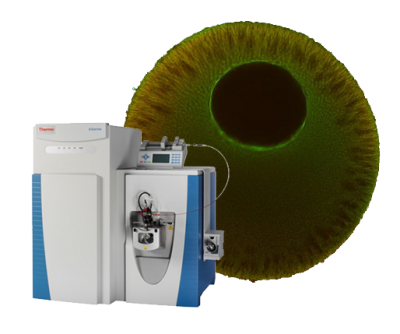MultiNotch MS3 enables accurate, sensitive, and multiplexed detection of differential expression across cancer cell line proteomes.
Type
Multiplexed quantitation via isobaric chemical tags (e.g., tandem mass tags (TMT) and isobaric tags for relative and absolute quantitation (iTRAQ)) has the potential to revolutionize quantitative proteomics. However, until recently the utility of these tags was questionable due to reporter ion ratio distortion resulting from fragmentation of coisolated interfering species. These interfering signals can be negated through additional gas-phase manipulations (e.g., MS/MS/MS (MS3) and proton-transfer reactions (PTR)). These methods, however, have a significant sensitivity penalty. Using isolation waveforms with multiple frequency notches (i.e., synchronous precursor selection, SPS), we coisolated and cofragmented multiple MS2 fragment ions, thereby increasing the number of reporter ions in the MS3 spectrum 10-fold over the standard MS3 method (i.e., MultiNotch MS3). By increasing the reporter ion signals, this method improves the dynamic range of reporter ion quantitation, reduces reporter ion signal variance, and ultimately produces more high-quality quantitative measurements. To demonstrate utility, we analyzed biological triplicates of eight colon cancer cell lines using the MultiNotch MS3 method. Across all the replicates we quantified 8,378 proteins in union and 6,168 proteins in common. Taking into account that each of these quantified proteins contains eight distinct cell-line measurements, this data set encompasses 174,704 quantitative ratios each measured in triplicate across the biological replicates. Herein, we demonstrate that the MultiNotch MS3 method uniquely combines multiplexing capacity with quantitative sensitivity and accuracy, drastically increasing the informational value obtainable from proteomic experiments.

